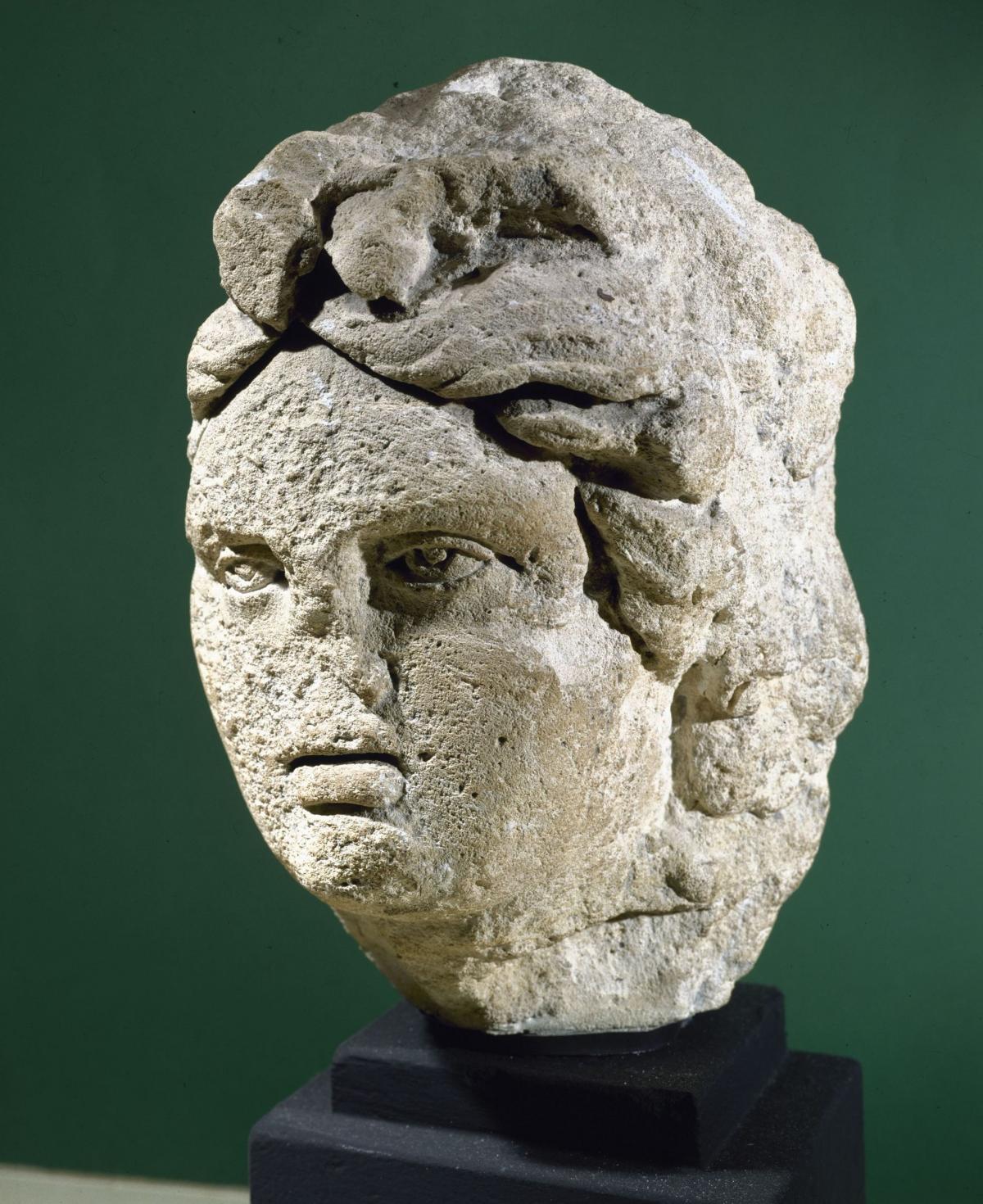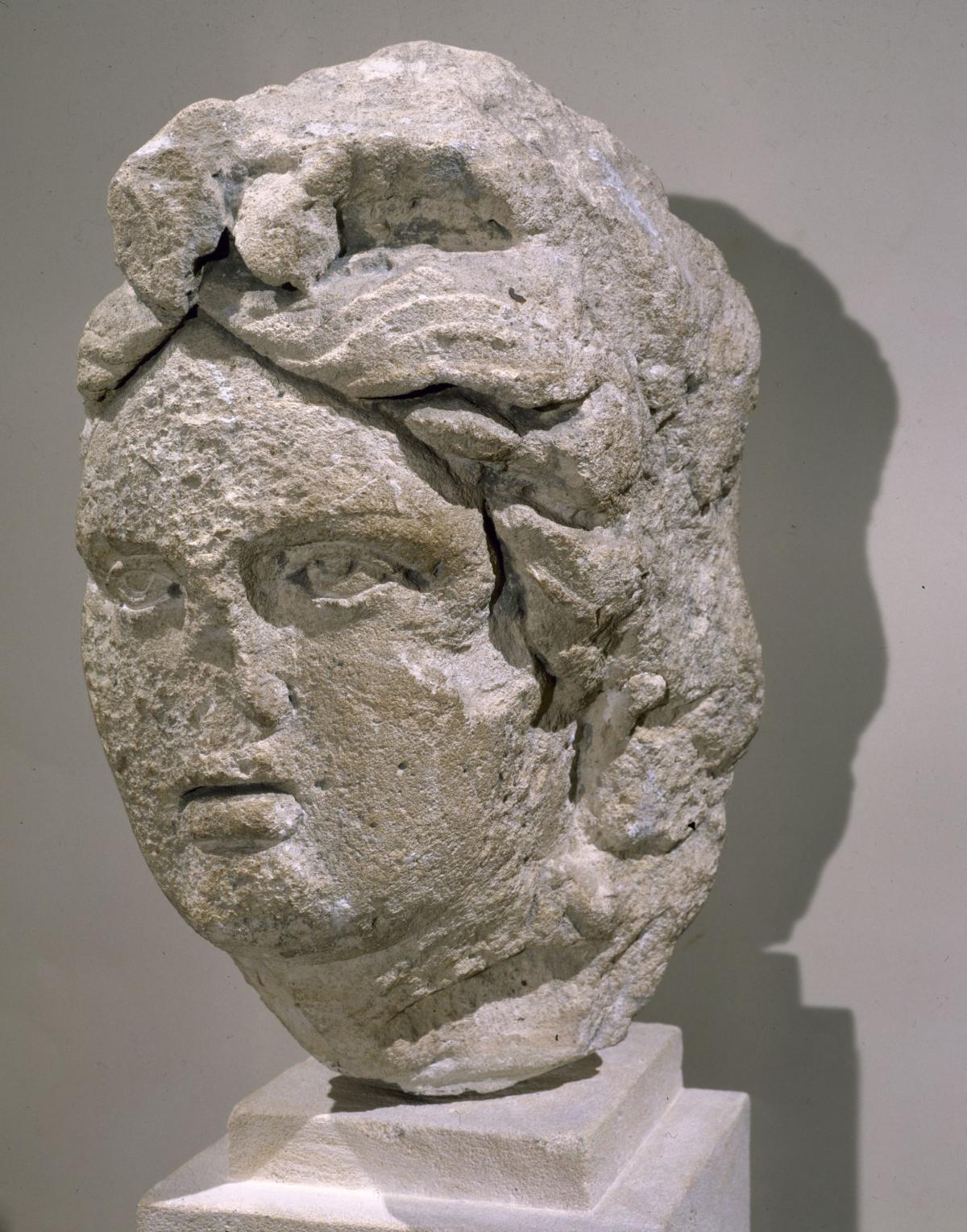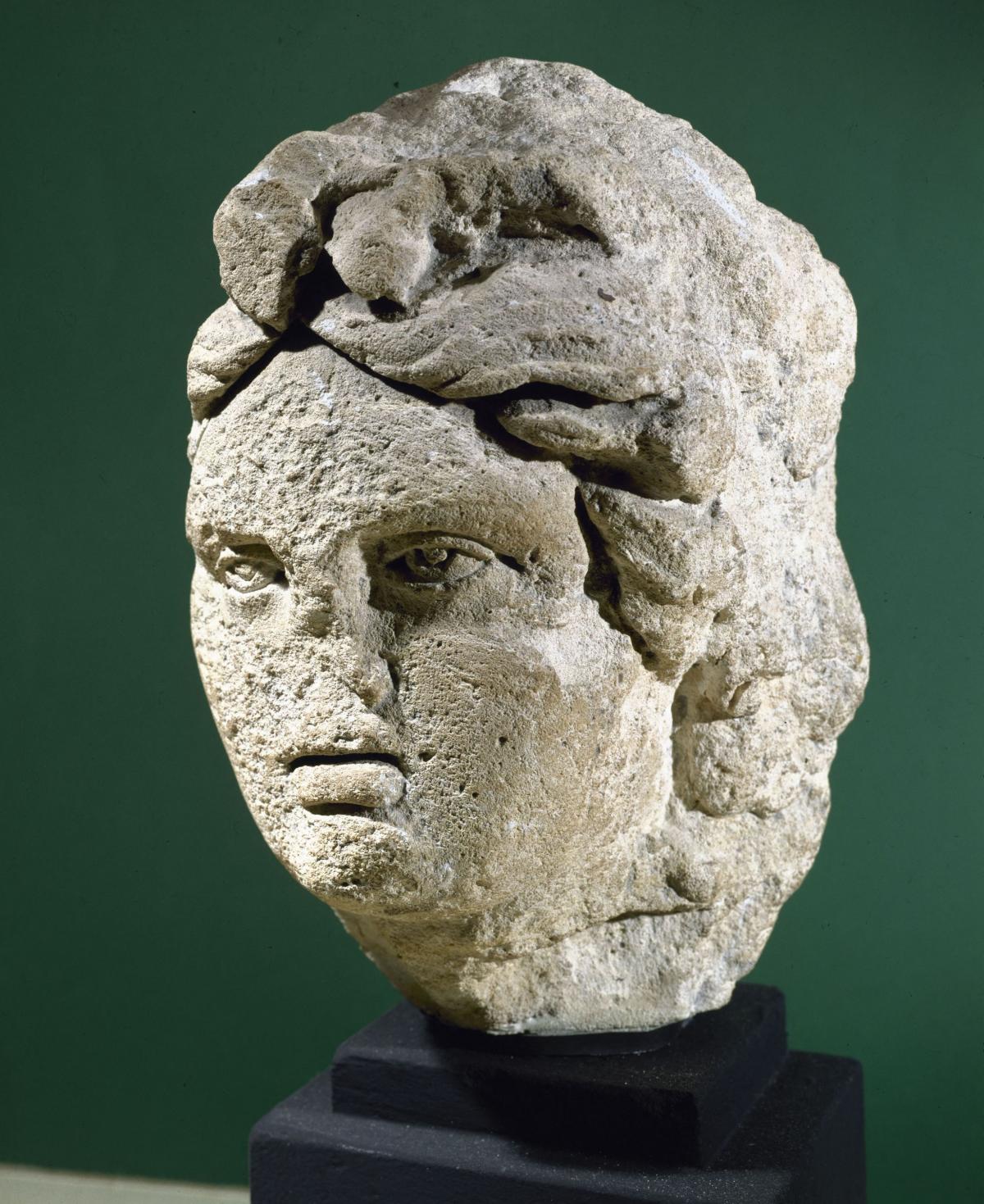Statue head from the ancient ampitheatre
This head is the only figurative vestige of the architectural decor of the Antique amphitheater that has come down to us.
It was discovered on September 11, 1885, next to numerous sculpted fragments, a cornice, a scale-patterned column, and a composite and Doric capital. It is probably one of the statues on the stage wall—the scaenae frons—which was decorated with alternating rectangular and semicircular niches. These niches held representations of allegories, gods or members of the imperial family, whose divine status authorized them to wear an oak-leaf crown.
A mixed building consisting of an amphitheater with an arena, as well as a theater with a stage, the Arènes de Lutèce have dimensions (130.40 m x 100 m) that make it one of the largest spectator venues in Gaul, right behind Arles or Nîmes. Dating from the late first century, the monument was unearthed in 1869, diggings were made several times until 1883, and the ruins were conserved and restored. They can still be visited at 47 Rue Monge in the 5th arrondissement.


